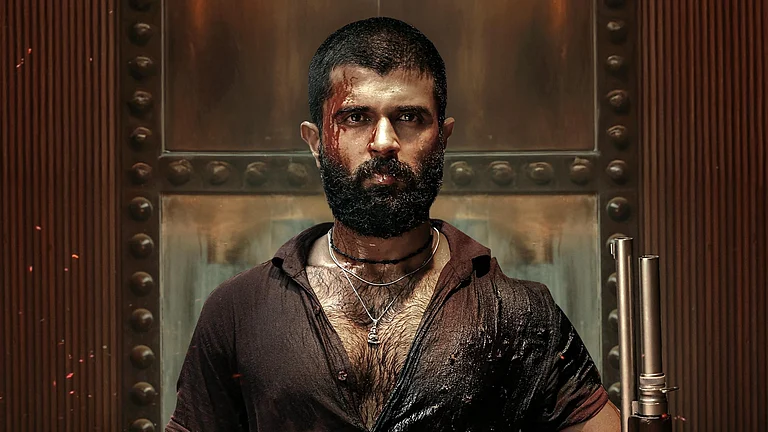We never went on the stage, that was made in our name,
They didn’t invite us, they pointed with their finger,
And showed us our place... (Translated from Bhil)
These unforgettable lines of revolutionary Adivasi poet Vahru Sonawane rightly depict the concerns of indigenous communities across the globe: the fear of appropriation. Since the colonial days, the upper caste and the upper class population of the world have mostly taken three routes to address what they call the ‘Adivasi issue’ — appropriation, exoticisation, or exclusion. Perhaps this was the ground that pushed the indigenous population of the world to unite for a cause — to let the subaltern speak.
In 1982, United Nations Working Group on Indigenous Population (UNWGIP) was formed and the group held its first conference on August 9 the same year. Twelve years later, on December 23, 1994, the UN General Assembly in its resolution 49/214 marked August 9 as the International Day of the World’s Indigenous People.
Struggle for indigenous status
Interestingly, though India voted in favour of the United Nations Declaration on the Rights of Indigenous Peoples, 2007, it didn’t give separate recognition to indigenous people in the country, citing the complex and nuanced histories of migrations and Independence struggle. Indian activists, however, have been claiming the indigenous status since the late 1980s.
In 1987, they formed the Indian Council for Indigenous and Tribal People (ICITP) and in its representation to UNGWIP assertively claimed that “Adivasis are the indigenous people of India”. In July 1998, ICITP’s submission to UNGWIP accessed by Outlook even questioned the foundational notion behind putting the communities within ‘schedule’ if they are not recognised as indigenous.
The submission notes: “While scheduling such peoples as ‘tribes’ in the Constitution and entrusting the President of India as the custodian with a special responsibility for their protection, it was clearly presumed that such people form the oldest ethnological sector of the population. And denying the oldest ethnological origin of such people, how was it possible to prepare a schedule?”
Emphasising further on the ancient roots of the people, rather than the colour of skin, shape of skill, custom or living conditions, the memorandum adds, “Ancestry or biological factor of descent from members of the oldest native population, culture —its naturalness and primitiveness, Indigenous languages— which are still unspecified and unrecognised” determine their indigenous identity. However, most of such efforts went in vain as the notion of Adivasis neither could accept the right-wing appropriation as Vanvasis nor it could win over the ‘sons of soil’ debate.
While the debate over recognition and identity never found its conclusion, recognition of the fifth and sixth schedule, the affirmative actions —constitutionally guaranteed reservation for 705 ethnic groups— known as Scheduled Tribes (ST), Forest Conservation Act, 1980; Panchayat Extension to Scheduled Areas Act, 1996; Scheduled Tribes (Prevention of Atrocities) Act, 1989, besides some other provisions provided them with temporal relief. Yet, are these means sufficient? Could these stop the attacks on Adivasis across the country? The recent incidents of Manipur indicate otherwise.
Conditions of Adivasis
The latest data of National Crime Records Bureau (NCRB) shows that the atrocities against Adivasis increased by 6.4 per cent in 2021. Whereas the number of registered attacks on Adivasis was 7,570 in 2019, it went up to 8,802 in 2021 with Madhya Pradesh leading the list with 2,627 cases, followed by Rajasthan with 2,121 cases.
A few studies even have shown that the condition of Indian Adivasis in terms of health is much worse than the other marginalised communities like Dalits and Muslims. Sangita Vyas, Payel Hathi, and Aashish Gupta in their 2022 study mention that in comparison to Hindu upper castes, Adivasis die four years earlier, whereas Dalits and Muslims die three years and one year earlier respectively.
The Tribal Development Report, 2022, published by Bharat Rural Livelihood Foundation (BRLF), also found that Adivasis are the most deprived section of the society in terms of “livelihoods, agriculture, natural resources, economy, migration, governance, human development, gender, health, education, art, and culture”.
So, do the claims of the “substantial increase of 12.32 per cent in the budget outlay of Rs 8,451 crores for the Ministry of Tribal Affairs”, as mentioned in the year-end review of the ministry stand the test of time? Dr Jaymati Kashyap, a Chhattisgarh-based scholar and activist, says, “It is not to say that Adivasis have not received support from the government. But, definitely, it is lacking in some places.” Notably, as per the Ministry of Tribal Affairs, between April-December 2022, they disbursed scholarships to 26.37 lakh students who have received it through direct benefit transfer (DBT).
However, in Chhattisgarh, the major problem in the path of development has been the fight with Maoists. “But still, we must work on the mentality of the people. If that is not changed, nothing can be done,” adds Kashyap.
Reclaiming the narratives
While Kashyap thinks of assimilation through development as a way forward, Naga activist and scholar Dr Lanusangla Tzudir believes recognition of differences and restoring of Adivasi culture would facilitate their socio-cultural growth. Tzudir, the founder of Heritage Publishing House, says, “We should be recognised as we are. We are part of India with all the social and cultural differences.”
Another way of regaining identity is to ‘deconstruct and reconstruct’ the folklores and narratives. “The British started writing our histories in the 1880s and gave their interpretations. But unfortunately, in the next century, when the indigenous people started writing, they continued reproducing the same narratives. It was only in the early 2000s that we started reclaiming our folklores and narratives,” says Tzudir, the author of Folktales from the North-East India.
Reclaiming what is rightfully theirs is a battle that Adivasis have been fighting for centuries. The Constitutional Assembly Debates give testimony to the fights of legendary Adivasi leader Jaipal Singh Munda for the right of the indigenous people. “Munda though tried his best to introduce land rights for Adivasis, it was overlapped by the fundamental rights. He several times said that for Adivasis land comes first and then any other right. But none paid heed to it,” says Jharkhandi Adivasi activist and scholar A K Pankaj.
Emphasising the provisions and administration of fifth and sixth schedule areas, Pankaj notes, “Jaipal Singh Munda tried to push for decisive political powers of Tribal Advisory Council (TAC) in the administration of fifth and sixth schedule area but they made it merely an advisory body. According to his proposition, the Governor could have never denied TAC’s decision. But in its current form, TAC can advise, not decide.”
According to the 2011 census, 8.6 per cent of India’s population belongs to tribal communities and 10 states are under the fifth schedule whereas four states of Northeastern India come under the sixth schedule.
While the current debates over ST status for different communities like Pahadi, Kurmi, and Meitei amongst others as have charged the political environment, the indigenous people across the country are struggling for dignity and recognition. On the day marked to celebrate indigenous people, one can’t help but remember the works of Australian aboriginal artist Richard Bell and his famous tent named ‘Aboriginal Embassy’. The write-up on the tent reads: If You Can’t Let Me Live Aboriginal Why Preach Democracy.



























